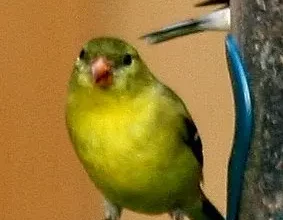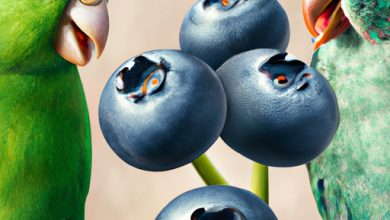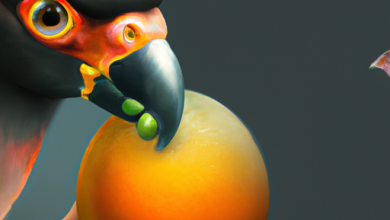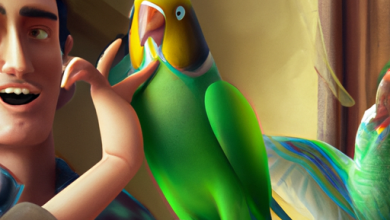Do Lovebirds Bite Hard? How To Train Your Lovebird Not To Bite?

Understanding Lovebird Biting Behavior
Lovebirds are a type of parrot that are known for their playful, affectionate personalities. They are also known for their tendency to bite, which can be a source of frustration for their owners. Understanding the reasons behind lovebird biting behavior is essential for successfully managing it.
Lovebirds are social creatures and naturally crave attention from their owners. If they are not given sufficient attention, they may resort to biting as a way of getting attention. This is especially true if the lovebird has been recently adopted and is still adjusting to its new home. Biting can also be a sign of boredom or frustration if the bird is not being provided with enough stimulation or activities.
Lovebirds may also bite as a form of communication. If a lovebird feels threatened or uncomfortable, it may bite in order to protect itself or show its displeasure. For example, if a lovebird is being handled too roughly or is placed in an unfamiliar situation, it may bite out of fear or anxiety.
Biting can also be a sign of dominance. Lovebirds are territorial creatures and may bite if they feel that their territory is being violated. This can be seen when two lovebirds are housed together, as they may fight for dominance by biting each other.
In some cases, lovebird biting behavior can be caused by medical issues such as malnutrition or an underlying health condition. If a lovebird is exhibiting unusual behavior, it is important to take it to a veterinarian to rule out
Establishing a Bond with Your Lovebird to Reduce Biting
Establishing a bond with your lovebird is an essential part of reducing biting. Lovebirds are intelligent and social birds that need to feel secure in their environment. When they feel safe and secure, they are less likely to bite.
The first step in establishing a bond with your lovebird is to provide a consistent routine and environment. Lovebirds thrive on routine and familiarity, so it’s important to provide them with a consistent schedule of meals, playtime, and sleep. This will help them feel secure and comfortable in their environment.
The next step is to spend time with your lovebird every day. Talk to them, sing to them, and let them explore their environment. This will help create a strong bond between you and your lovebird. Additionally, it’s important to handle your lovebird regularly. This will help them become accustomed to human contact and help reduce their fear of people.
It’s also important to provide plenty of toys and activities for your lovebird. This will help keep them entertained and engaged, which can help reduce boredom and stress. Additionally, providing toys and activities will help your lovebird develop mentally and physically.
Finally, it’s important to reward your lovebird for good behavior. Whenever they do something you like, reward them with a treat or a scratch behind the ears. This will reinforce good behavior and help create a positive bond between you and your lovebird.
By
Training Your Lovebird Not to Bite
Training your lovebird not to bite is an important part of owning a lovebird. Biting is a natural behavior for lovebirds, but it can be dangerous and even painful for their owners. Fortunately, there are steps that can be taken to reduce or eliminate biting in lovebirds.
The first step in training your lovebird not to bite is to understand why they bite. Lovebirds may bite out of fear, aggression, boredom, or simply because they want attention. Understanding the reasons why your lovebird is biting can help you address the underlying issue and prevent further biting.
Once you understand why your lovebird is biting, you can start to take steps to prevent it. First, make sure that your lovebird feels safe and secure. Provide plenty of toys and activities to keep them entertained and reduce boredom. Make sure that they have a comfortable place to sleep and rest.
Second, avoid handling your lovebird when they are feeling scared or aggressive. If they are feeling scared, provide them with a safe space to retreat to until they feel better. If they are feeling aggressive, give them some time alone until they calm down.
Third, use positive reinforcement when training your lovebird not to bite. Offer treats or praise when they do not bite and ignore them when they do bite. This will help them learn that biting is not a desirable behavior.
Finally, be patient and consistent when training your lovebird not to bite. It may take
Identifying and Avoiding Potential Triggers for Biting
Identifying and avoiding potential triggers for biting is an important part of preventing biting behaviors in children. Biting is a common behavior in young children, and it can be a sign of frustration, fear, or a lack of communication skills. While it is normal for children to bite occasionally, it is important to identify and address any underlying causes that may be contributing to the behavior.
The first step in identifying potential triggers for biting is to observe the child’s behavior. Look for patterns in the child’s behavior that may indicate when they are likely to bite. Common triggers for biting include hunger, fatigue, boredom, overstimulation, and feeling overwhelmed. Pay attention to the child’s body language and facial expressions, as these can provide clues as to what is causing the biting behavior.
Once potential triggers have been identified, it is important to create strategies to avoid them. For example, if the child tends to bite when they are hungry, make sure they have healthy snacks available throughout the day. If the child tends to bite when they are tired or overstimulated, create a calming environment with plenty of quiet activities.
It is also important to provide positive reinforcement for non-biting behaviors. Praise the child for using words or other appropriate behaviors instead of biting. This will help reinforce the desired behavior and make it more likely that the child will choose it in the.
Finally, it is important provide consistent consequences for
Providing Appropriate Toys and Activities to Discourage Biting
Providing appropriate toys and activities to discourage biting is an important part of helping children learn appropriate behavior. Biting is a common behavior among young children, but it can be dangerous and should not be tolerated. By providing appropriate toys and activities, parents and caregivers can help children learn to express themselves in more acceptable ways.
When it comes to providing appropriate toys and activities to discourage biting, the key is to provide activities that are engaging and stimulating for the child. Toys that are too simple or too complex can be frustrating for the child and may lead to more biting. Toys should also be age-appropriate, as younger children may not be able to handle more complex toys. Additionally, it is important to provide a variety of toys and activities that allow the child to explore different textures, colors, shapes, and sounds. This will help keep the child engaged and provide them with an outlet for their energy.
In addition to providing appropriate toys, it is important to provide positive reinforcement when the child does not bite. Pra, hugs, and other of positive reinforcement can help child understand that biting not acceptable behavior. It is also important to provide clear boundaries for the child so they know what behavior is expected of them.
Finally, it is important to be consistent with providing appropriate toys and activities to discourage biting. If the child does not have access to appropriate toys or activities, they may turn to biting as a way of expressing themselves. Providing consistent access to
Excerpt
Lovebirds can be a delightful pet, but they can also bite. To prevent biting, it is important to train your lovebird not to bite. This can be done through positive reinforcement, such as rewarding good behavior with treats, and avoiding harsh punishments that could cause fear or aggression.




